The Golden Globes animation category is much more interesting than we thought it would be!
The post Two Big Surprises And One Big Snub In The Golden Globes Animation Nominees appeared first on Cartoon Brew.
Add a Comment
The Golden Globes animation category is much more interesting than we thought it would be!
The post Two Big Surprises And One Big Snub In The Golden Globes Animation Nominees appeared first on Cartoon Brew.
Add a Comment
The opening weekend of "Moana" is solid, but questions remain whether it can match "Zootopia" or "Frozen."
The post ‘Moana’ Enjoys 1st Place Launch in the U.S., But Opens Soft in China appeared first on Cartoon Brew.
Add a Comment
Box office pundits underestimated yet another animated film.
The post ‘Trolls’ Launches With Powerful $45M+, ‘Finding Dory’ Surpasses ‘Zootopia’ To Become Year’s Top-Grossing Animation appeared first on Cartoon Brew.
Add a Comment
'Trolls' director Mike Mitchell and co-director Walt Dohrn talk to Cartoon Brew about creative freedom, how Genndy Tartakovsky and Phil Lord helped out, and making cg look more handmade.
The post ‘Trolls’ Director Mike Mitchell: There Was No Mythology to These Things…I’ve Never Felt So Free appeared first on Cartoon Brew.
Add a Comment
"Trolls" debuted at No. 1 in nine markets.
The post ‘Trolls’ Launches With $18 Million Internationally; GKIDS Expands ‘Miss Hokusai’ in U.S. appeared first on Cartoon Brew.
Add a Comment
Discover the art of Clio Chiang, Cartoon Brew's Artist of the Day.
The post Artist of the Day: Clio Chiang appeared first on Cartoon Brew.
Add a Comment
The first full-length "Trolls" trailer shows off an imaginative and appealing cartoon universe.
The post New ‘Trolls’ Trailer Shows Off A Different Side of Dreamworks appeared first on Cartoon Brew.
Add a Comment
The annual mega-animation festival is happening in a few weeks, and we're here to help guide you through it.
The post 9 Can’t-Miss Events At Annecy 2016 appeared first on Cartoon Brew.
Add a Comment
And trolls poop cupcakes!
The post New ‘Trolls’ Clip With Cloud Guy Is Sillier Than Usual For Dreamworks appeared first on Cartoon Brew.
Add a Comment
DreamWorks presents its new take on the classic toy dolls.
The post DreamWorks Debuts ‘Trolls’ Teaser appeared first on Cartoon Brew.
Add a Comment
From new visions to revivals of lost wonders, next year's incoming animated features reach far and wide. But how far?
The post 47 Animated Features to Look for in 2016 appeared first on Cartoon Brew.
Add a CommentWhy #BoycottStarWarsVII is a lie
When you’re already giggling just eleven words into a story, you know you’re on to a very good thing.
 And so it is with the delicious
And so it is with the delicious child- cake-eating-troll-quest to save a lost little sister that is Grumbug! by Adam Stower (@Adam_Stower).
Dolly, blissfully unaware of any danger that might be lurking out there, has wandered off. We have to keep our fingers crossed that she hasn’t ended up at the home of the “biggest, meanest, grumpiest and greenest troll of them all“, the troll which has all others quaking in their boots: GRUMBUG!
Determined to find her, and in the sure belief that anything can be sorted out with a jolly nice slice of cake, big brother Oliver and his old (blue) friend Troll set of to bring her back home.

Oliver seems utterly oblivious to the ominous signs that are all too obvious to us readers and listeners as we follow Dolly’s tracks further and further from safety. And just as the tension has been ratcheted up as far as we can take it… a gloriously theatrical page-turn has us all relishing in the relief, laughing as we realise we’ve been holding our breath.

But then comes a twist in the tale that makes for a particularly enjoyable readaloud (especially if you love a bit of acting it out or making silly voices) before we all find out whether or not cake really can save the day.
Grumbug!‘s encouraging message that bravery and kindness are able to solve all sorts of problems is delivered with bags of humour, in text, in pictures and in the interplay between the two of them, making this a book which remains a delight to read time and time again. (In fact, once you know all the surprises, they become even more enjoyable.) Then there are the little details which might only come to you after several readings; Check the endpapers for clues as to what you could find…
Delightful characterization, an upbeat take on life and – yes – plenty of cake make this a marvellously happy read, despite the looks of anxiety on the book’s front cover. I loved Troll and the Oliver enormously, and this second book with the same characters is a worthy successor. Here’s hoping Oliver and Troll with be back for a third outing to make us giggle and fill us with delight.

As I would so very much enjoy reading this book to a classroom of kids I wanted to come up with an activity which could be replicated fairly easily for 30 or so kids to join in with. I designed a simple mask (ideally to print onto card), which can be customised for either Troll or Grumbug.
You can download the mask (A4, pdf) here.
A bit of paint, some glue, tissuepaper and a few pipecleaners later…

…and here we have Troll…

And here we have GRUMBUG!

And here we have Dolly and Oliver and one ENORMOUS cake. Has Grumbug eaten that slice of cake or is he going to gobble up the kids?

Whilst making our masks we listened to:
Other activities which would go well with reading Grumbug! include:
If you liked this post you might like these others of mine:

If you’d like to receive all my posts from this blog please sign up by inputting your email address in the box below:
Delivered by FeedBurner
Disclosure: I received a free review copy of this book from the publisher.
What do trolls and the New York Times bestseller list have in common?
“Books transmit values. They explore our common humanity. What is the message when some children are not represented in those books?”
Last weekend Walter Dean Myers, a previous National Ambassador for Young People’s Literature (the US equivalent of the UK’s children’s laureate) wrote a thought-provoking article in the New York Times about the need for books for children’ and young people to truly reflect the world around them. In his piece he was focussing on the lack of black children and young adults in books written for them. But I think much of what he writes is more widely applicable, as was explored and demonstrated at last month’s Inclusive Minds ‘What About Me?’ day at Imagine Children’s Festival. Among many other activities that day there was a discussion of the “concept of normal” in books for children and young adults, and the importance of diversity, of showing all sorts of children, from all sorts of backgrounds, so that all children could read books and see themselves somehow reflected, included and valued.
In a beautiful case of serendipity, with Myers’ words in my head, I picked up  The Astonishing Case of the Stolen Stories by Anca Sandu (@anca_sandu).
The Astonishing Case of the Stolen Stories by Anca Sandu (@anca_sandu).
Across a fairy tale kingdom, all stories have been stolen. The palace bookshelves are empty, the bookshop has no stock, and even cookery books and spell books are missing. A trio of detectives are called upon to crack the case and track down the culprit, but when they do so the explanation given for the thievery is heartbreaking:
“Well, I don’t know who I am,”
replied the thing. “I’ve found everyone
else in a book, but never me –
I thought if I kept looking
I might find a book with
my story in it.”
Children may not always be able to articulate it, but it is tremendously powerful when they find a story in which they recognise something of themselves, or something of what they could be. It’s the same for us grown ups, isn’t it?
Sandu’s gorgeous story ends positively with the detectives not only solving the case, but going further and taking steps to solve the source of the problem. Upbeat, witty, inventive, with compassion and creativity – there’s lots to love here.
The Astonishing Case of the Stolen Stories is tantalisingly ripe for use in literacy lessons, begging for teachers and children to work together to write their own stories. There are even jokes about enriched vocabulary, which will revitalise the drive for kids to use “wow” words or “power” words.

Sandu’s illustrations are shot with spring-like pastel hues and achieve a quite magical balance of clutter free, smooth spreads (enhanced by slightly glossy printing) sprinkled with humorous detail: See how many fairytale characters such as the Gingerbread man and Rapunzel you can find hidden in the illustrations.
Although I love The Astonishing Case of the Stolen Stories and would urge you to read it yourself, I also feel Sandu perhaps missed an opportunity in illustrating her story about the importance of readers seeing themselves somehow reflected in the books they read.
There are few female characters in this book; the humans that feature are all white, and the only inclusion of someone with any sort of disability is a pirate with an eye patch. Now I’m not saying that every book has to feature equal numbers of males and females, and different skin colours and people who use wheelchairs (for example), but I am observing that even in a book where your attention is drawn to the fact that readers like to find themselves in books (and thereby explicitly acknowledges the importance of reflecting society in its beautiful diversity – even in a fairy tale kingdom – in the stories we write and read) perhaps more could have been done to reach out to those kids who find it hard to find themselves in stories.
Inspired by the hunt for stories in Sandu’s book we set up our very own storybook treasure hunt. M and J were designated storybook detectives for the afternoon, after I had hidden books and clues around the house and garden.

The clues were very simple and just asked the girls to work out a location based on a book I knew they knew. So, for example, I asked “Where was Pushka trapped until Lulu rescued him?” (The oven, see Pushka), “What gave Ulysses the squirrel his name?” (A vacuum cleaner, see Flora & Ulysses) and “What are you sorting out when you go DING DONG BANG or BING BONG CLANG?” (the kitchen pans, see All Join In).

They then rushed around finding the books I’d hidden…



And when they had solved the final clue we sat and read a selection of the books they’d found whilst munching on a treat:

These are entirely edible storybooks made from no-cook fudge, coloured to match the pastels in The Astonishing Case of the Stolen Stories

The recipe is super easy and brilliant for kids – just 3 ingredients (not including colouring or sprinkles), and all you need to do is mix everything together. The resulting “fudge” is lovely to play with, a little like edible playdoh. If you put it in the fridge for a little it firms up nicely and makes perfect books!
Whilst making the no-bake-fudge story books we listened to:
Alongside reading The Astonishing Case of the Stolen Stories you could enjoy:
What sort of stories are you currently hunting for?
Disclosure:I received a free review copy of this book from the publisher.
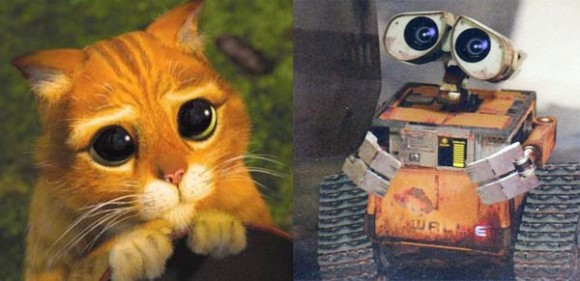
Over on question-and-answer website Quora, someone posted a very simple question: Which is the cutest cartoon character ever created? The answers from Quora members cover a broad spectrum, some more obvious (Tweety, Pokemon, Pooh) and others less so (Gertie the Dinosaur, Night Fury from How to Train Your Dragon).
So what makes a cartoon character cute? You could reduce the answer down to a few basic characteristics: big eyes and head, fluffiness, warmth and chubbiness. “Cuteness is based on the basic proportions of a baby plus the expressions of shyness or coyness,” wrote Preston Blair in Advanced Animation. According to Blair, other cute traits include:

But cuteness is far more complex than even Blair’s set of rules; some consider E.T., Yoda and WALL·E to be the epitome of cute, despite their furless, odd appearances. Cuteness and a character’s perceived hugability aren’t always determined by aesthetic appeal. “Cuteness is distinct from beauty,” wrote Natalie Angier for The New York Times. “Beauty attracts admiration and demands a pedestal; cuteness attracts affection and demands a lap.”
In essence, any creature deemed cute is one that speaks to our nurturing instincts. The cuteness of an infant can motivate an adult to take care of it, even if the baby is not a blood relation. Even more, studies have found that humans transfer these same emotions to animals (or even inanimate objects) that bear our similar features. Finding Nemo combined all of these psychological elements perfectly—you can’t hug or cuddle a fish, yet adorable Nemo, with his fin damaged from birth and his human-like facial features, appeals to our caregiving instincts. In fact, every character in Pixar films, whether it’s a clownfish or a car, features forward-facing eyes, the most crucial feature for achieving an emotional connection with the audience.
But with any extreme comes another. If a character is too cute and sugary sweet, the audience can develop skepticism. “Cute cuts through all layers of meaning and says, ‘Let’s not worry about complexities, just love me,’” philosopher Denis Dutton told The New York Times. It is for that very reason cuteness stirs uneasiness and sometimes feels cheap.
After all, the adorable, smiling face of a child can hide the havoc he just wreaked by breaking all of his toys. “Cuteness thus coexists in a dynamic relationship with the perverse,” writes Daniel Harris in his book Cute, Quaint, Hungry And Romantic: The Aesthetics Of Consumerism. You could call this the Gremlin Effect—a character with an underlying creepiness. Troll dolls (which were recently acquired by DreamWorks Animation) and Cabbage Patch Kids are the inexplicable result of this paradox.
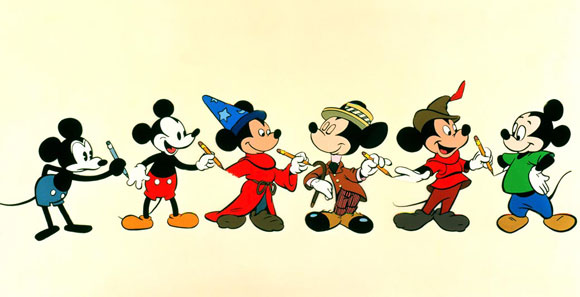
There’s no denying a cultural need to pigeonhole and perfect the attributes that could be popularly deemed cute. In his fantastic short essay on Mickey Mouse, biologist and historian Stephen Jay Gould asserts that Mickey’s changing appearance over time is a physical evolution that mirrors cultural attitudes toward cuteness. As the Benjamin Button of animated rodentia, Mickey’s eyes and head have grown larger, his arms and legs chubbier. Mickey has become more childlike and, most would say, more cute and less rat-like. Mickey isn’t the only character to undergo this transformation. The teddy bear, first sold in 1903, started out anatomically similar to a real bear, with a long snout and gangly arms. Today’s teddy bears more closely resemble the Care Bears, with pudgier features and colorful fur.
Audience don’t always need Mickey’s goofy grins and huge eyes to connect with a character’s cuteness. Pictoplasma, the artists’ network and conference that celebrates characters extracted from context, reveals how sometimes it’s our own invented narrative that blasts a character into hall-of-fame cuteness. As Pictoplasma co-founder Peter Thaler said explains, “It’s a horrible example, but Hello Kitty has no facial expression. You don’t know if she’s happy or sad; you just see these two dots. You’re projecting all the narration, the biography.”
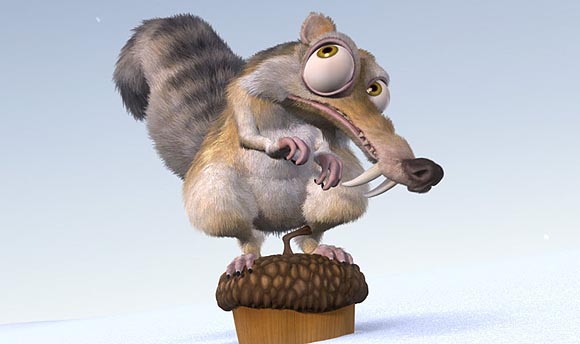
Our ideals of cuteness continue to evolve, a trajectory in visual culture that has birthed Hello Kitty and Japan’s kawaii movement, Giga Pets, Furby, Elmo and Slimer. Often the most exciting, memorable cute characters are the ones who bear negative traits that reveal the vulnerability. Scrat, the saber-toothed squirrel from Ice Age, is adorable and loved by audiences even more for his greed. Cuteness, perhaps then, is not just about an objective set of physical features—it’s also about a behavior that compels audiences and connects us emotionally to the character.
Add a Comment

Over on question-and-answer website Quora, someone posted a very simple question: Which is the cutest cartoon character ever created? The answers from Quora members cover a broad spectrum, some more obvious (Tweety, Pokemon, Pooh) and others less so (Gertie the Dinosaur, Night Fury from How to Train Your Dragon).
So what makes a cartoon character cute? You could reduce the answer down to a few basic characteristics: big eyes and head, fluffiness, warmth and chubbiness. “Cuteness is based on the basic proportions of a baby plus the expressions of shyness or coyness,” wrote Preston Blair in Advanced Animation. According to Blair, other cute traits include:

But cuteness is far more complex than even Blair’s set of rules; some consider E.T., Yoda and WALL·E to be the epitome of cute, despite their furless, odd appearances. Cuteness and a character’s perceived hugability aren’t always determined by aesthetic appeal. “Cuteness is distinct from beauty,” wrote Natalie Angier for The New York Times. “Beauty attracts admiration and demands a pedestal; cuteness attracts affection and demands a lap.”
In essence, any creature deemed cute is one that speaks to our nurturing instincts. The cuteness of an infant can motivate an adult to take care of it, even if the baby is not a blood relation. Even more, studies have found that humans transfer these same emotions to animals (or even inanimate objects) that bear our similar features. Finding Nemo combined all of these psychological elements perfectly—you can’t hug or cuddle a fish, yet adorable Nemo, with his fin damaged from birth and his human-like facial features, appeals to our caregiving instincts. In fact, every character in Pixar films, whether it’s a clownfish or a car, features forward-facing eyes, the most crucial feature for achieving an emotional connection with the audience.
But with any extreme comes another. If a character is too cute and sugary sweet, the audience can develop skepticism. “Cute cuts through all layers of meaning and says, ‘Let’s not worry about complexities, just love me,’” philosopher Denis Dutton told The New York Times. It is for that very reason cuteness stirs uneasiness and sometimes feels cheap.
After all, the adorable, smiling face of a child can hide the havoc he just wreaked by breaking all of his toys. “Cuteness thus coexists in a dynamic relationship with the perverse,” writes Daniel Harris in his book Cute, Quaint, Hungry And Romantic: The Aesthetics Of Consumerism. You could call this the Gremlin Effect—a character with an underlying creepiness. Troll dolls (which were recently acquired by DreamWorks Animation) and Cabbage Patch Kids are the inexplicable result of this paradox.

There’s no denying a cultural need to pigeonhole and perfect the attributes that could be popularly deemed cute. In his fantastic short essay on Mickey Mouse, biologist and historian Stephen Jay Gould asserts that Mickey’s changing appearance over time is a physical evolution that mirrors cultural attitudes toward cuteness. As the Benjamin Button of animated rodentia, Mickey’s eyes and head have grown larger, his arms and legs chubbier. Mickey has become more childlike and, most would say, more cute and less rat-like. Mickey isn’t the only character to undergo this transformation. The teddy bear, first sold in 1903, started out anatomically similar to a real bear, with a long snout and gangly arms. Today’s teddy bears more closely resemble the Care Bears, with pudgier features and colorful fur.
Audience don’t always need Mickey’s goofy grins and huge eyes to connect with a character’s cuteness. Pictoplasma, the artists’ network and conference that celebrates characters extracted from context, reveals how sometimes it’s our own invented narrative that blasts a character into hall-of-fame cuteness. As Pictoplasma co-founder Peter Thaler said explains, “It’s a horrible example, but Hello Kitty has no facial expression. You don’t know if she’s happy or sad; you just see these two dots. You’re projecting all the narration, the biography.”

Our ideals of cuteness continue to evolve, a trajectory in visual culture that has birthed Hello Kitty and Japan’s kawaii movement, Giga Pets, Furby, Elmo and Slimer. Often the most exciting, memorable cute characters are the ones who bear negative traits that reveal the vulnerability. Scrat, the saber-toothed squirrel from Ice Age, is adorable and loved by audiences even more for his greed. Cuteness, perhaps then, is not just about an objective set of physical features—it’s also about a behavior that compels audiences and connects us emotionally to the character.
Add a Comment

Ogres are so yesterday. DreamWorks Animation just announced that they have acquired the IP for the Trolls franchise from the Dam Family and Dam Things of Denmark. DreamWorks now becomes the exclusive worldwide licensor of the merchandise rights for the humorously-deformed Don King-hairstyled Troll Dolls, with the sole exception of Scandanavia where Dam Things will remain the licensor. The studio had previously announced that they were developing a Trolls feature.
DreamWorks also announced that they have tapped American Girl veteran Shawn Dennis to lead the Trolls brand development. “Trolls is a brand with over fifty years of deep heritage and we are thrilled to bring this iconic, multi-generational property to DreamWorks Animation,” said Chief Operating Officer Ann Daly. “We have big plans for this franchise and Shawn Dennis is uniquely suited to lead this charge. She helped grow the American Girl brand into a household name and by bringing this expertise to Trolls she will introduce these characters to legions of new fans around the world.”
Dennis joins DreamWorks from American Girl, where she was Senior Vice-President of Marketing (Product Development and Publishing). Prior to that, she was group head of global branding at Dell, and Chief Marketing Officer and Vice-President of the NFL.
Calle Ostergaard, CEO of Dam Things, said, “DreamWorks Animation is renowned for telling wonderful stories about imaginative worlds while bringing characters with universal appeal into the hearts and homes of families everywhere – I can think of no better future for Trolls. We are confident that the time-honored legend of the Trolls, which holds such special significance to the Dam family and the people of Scandanavia, will now live on in new and exciting ways with DreamWorks Animation.”
Add a Comment
Join the Party! Jeff Gunhus is wrapping up a 3 week tour with a Twitter Party on Friday, December 21 from 6 pm to 8 pm EST Use the hashtag #JackTemplar to join the party. Missed the tour? Check out the entire tour schedule for great reviews, guest posts, and interviews!…………………………………………. MONSTER HUNTERS ~~AND ~~ [...]![]()
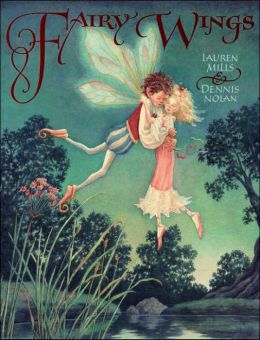
Fairy Wings
Ridiculed by all but her animal friends, little wingless Fia spends her days on the earth rather than in the sky. But when the boy fairy Kip invites her to attend the May Dance, Fia timidly accepts. Her wingless condition creates a stir until the dance is interrupted by a wicked troll seeking a late-night snack of fairy wings!
If you liked this, try:
Fia and the Imp
The Book of Little Folk
If you See a Fairy Ring
Fairy Houses
How to Find Flower Fairies
4 Star The Templar Chronicles, Book 1: Jack Templar Monster Hunter Jeff Gunhus 184 Pages Ages 8 to 12 …………………….. Back Cover: If you have this book in your hands, I assume you are already a monster hunter or in training to become one. I hope my story helps you in the many fights ahead. However, [...]![]()
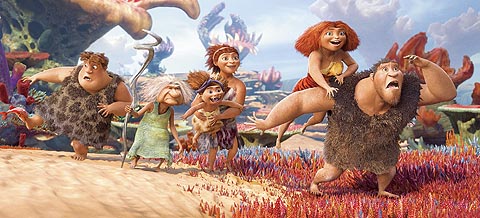
DreamWorks Animation has unveiled the most ambitious animated feature slate of any cartoon studio in history. Beginning next spring, DreamWorks will release a total of 12 features in 3-1/2 years under their new distribution deal with Fox.
More details about DreamWorks’ plans can be found at the Wall Street Journal and The Hollywood Reporter. Here is the list of films and release dates:
The Croods (March 22, 2013)
Turbo (July 19, 2013)
Mr. Peabody & Sherman (Nov. 1, 2013)
Me and My Shadow (March 14, 2014)
How to Train Your Dragon 2 (June 20, 2014)
Happy Smekday! (Nov. 26, 2014)
The Penguins of Madagascar (March 27, 2015)
Trolls (working title, June 5, 2015)
B.O.O: Bureau of Otherwordly Operations (Nov. 6, 2015)
Mumbai Musical (working title, Dec. 19, 2015)
Kung Fu Panda 3 (March 18, 2016)
How to Train Your Dragon 3 (June 18, 2016)
_____________________________________________________________________________
The recent, latest online activism against an online idiot encouraged me to write something which I had been thinking about for awhile.
The philosophical musing began when I discovered the following on Wikipedia:
Eternal September
From Wikipedia, the free encyclopedia(Redirected from Long September)Jump to: navigation, searchEternal September (also September that never ended)[1] is the period beginning September 1993,[2] a date from which it is believed by some that an endless influx of new users (newbies) has degraded standards of discourse and behavior on Usenet and the wider Internet.
The term eternal September is a Usenet slang expression, and was coined by Dave Fischer. The term is so well entrenched that one news server calls itself Eternal September, and gives the date as a running tally of days since September of 1993 (e.g., Sep. 03, 2012 is “September 6943, 1993, the September that never ends.”).[3] This server was formerly named Motzarella.org.[4]
[edit] Background
Usenet originated among American universities, where every year in September, a large number of new university freshmen acquired access to Usenet for the first time, and took some time to acclimate to the network’s standards of conduct and “netiquette“. After a month or so, these new users would theoretically learn to comport themselves according to its conventions, or simply tire of using the service. September thus heralded the peak influx of disruptive newcomers to the network.[1]
Around 1993, the online services such as America Online, CompuServe and Demon Internet began offering Usenet access to its tens of thousands, and later millions, of users. To many “old-timers”, these newcomers were far less prepared to learn netiquette than university students. This was in part because the new services made little effort to educate their users about Usenet customs, or to explain to them that these new-found forums were outside their service provider’s walled garden, but it was also a result of the much larger scale of growth. Whereas the regular September freshman influx would quickly settle down, the sheer number of new users now threatened to overwhelm the existing Usenet culture’s capacity to inculcate its social norms.[5]
Since that time, the dramatic rise in the popularity of the Internet has brought a constant stream of new users. Thus, from the point of view of the pre-1993 Usenet user, the regular “September” influx of new users never ended. The term was used by Dave Fischer in a January 26, 1994, post to alt.folklore.computers, “It’s moot now. September 1993 will go down in net.history as the September that never ended.”[6]
Some ISPs have eliminated binary groups (Telus in Canada)[7] and others have dropped Usenet altogether (Comcast,[8] AT&T[9], AOL[10][11]). This led some commentators to claim that perhaps September is finally over.[12][13]
——
I was a university student who used the Internet before AOL, Compuserve, and the World Wide Web caused the beginning of the “Eternal September”. I had to learn netiquette. Even when AOL and other online services began to link to the Internet, the users were still paying to use those services, and could be identified, even if they used a screenname (usually required, because of a limit on length) or an account number (CompuServe).
Now? Anyone can go online, create an pseudonymous email account, and post away. If one account is blocked, another can be created.
So, how do you make the Internet a better place for polite discourse? You probably can’t. But here are some possibilities:
1. Hardwire metadata into each online transaction. A person’s location, the connections used, the computer’s identification number… Sure, these can be spoofed via proxies and offshore servers, but you make that a legal requirement, and thus give authorities another tool for prosecution. System administrators can block problem users, and report them to a central agency, in much the same way banks report individuals to credit bureaus. The user would be notified, and an appeal process would be available. Of course, the electronic evidence trail would be quite specific and damning. If a computer is blocked but used by various people, (such at a university or family) then the owner would be required to discipline the user.
1.5 Allow internet users, via various Internet services, to automatically block anyone with a suspect reputation. An individual could even filter by various criteria. Just as Google Chrome warns of suspicious sites, so could social media sites issue a warning when receiving email, instant messages, or other communications from irreputable individuals or computers (such as boiler room scams).
2. Pseudonyms are sometimes required. An individual might be at danger for posting information to the Internet which a government might consider seditious. A person might have created a following on another website and become known by that screen name, just like a writer is known by a pen name.
3. The Internet comment system is the electronic equivalent of a newspaper’s “letters to the editor” column. While it is difficult to monitor comments on every article or web page, there can be alternatives. Comment feeds can allow readers to rate other comments, and the comment system can hide or promote accordingly. If the system is widespread, and uses services such as Facebook, Google, Disqus, Twitter or Yahoo for a commenter to login, then those systems can track the reputation of the user. Of course, this can be abused if others bully a specific user, but then those individual can be identified as well. (The system can even be programmed to check for people who stalk or bully an individual repeatedly.)
4. Teach children the importance and responsibility of writing. “Don’t write anything you don’t want being read in public” was a common warning back when that only meant paper and pen. Now with instant caching and searching, it’s an even more critical skill. Teach students how to write clearly, how to argue and debate politely (if deviously), and how to avoid being viewed as a jerk.
—
I don’t know what the future holds. The Internet makes it so easy to find information, but it also makes it extremely easy to preach to the choir, to avoid anything which might shatter a fantasy or belief. I would hope that extremes would be mitigated, in much the way they were a century ago when local newspapers would promote specific agendas without advocating extremes.
I don’t know if that will change. Some big event, like Oklahoma City, fomented by extremists, won’t make an impact (we didn’t learn the lesson then, and politics has become even more partisan since). Most likely, it will require a lot of different interests working together to make a positive change, but when no one is listening to anyone else, how do get people to work together? Maybe interfaith initiatives can provide some guidance, but the problem with being a peacemaker is that you usually get shot from both sides of the battlefield.
Myself, I’ll continue to (try to) be tolerant and calm when confronted by impassioned commentary. (Most of the time, I just walk away and ignore, refusing to read comments on Yahoo News, for example.) It’s not easy, but life rarely is.
Now, I’m allowing comments, so be polite, intelligent, and understanding. Constructive criticism is welcomed, and I enjoy discourse if it makes me think.
4 Stars Tilden Troll didn’t think he was any different from other trolls until he entered the first grade. There, because of his size, he was laughed at and teased by his classmates, who were led by one especially nasty bully. But when the bully found himself in big trouble, only Tilden’s size could save [...]![]()
They got what they wanted…attention.
Of note, Ava DuVernay did propose the hashtag #CelebrateStarWarsVII, recognizing that the backlash against the original was causing it to trend, and that tag has inspired a number of more positive posts: http://www.latimes.com/entertainment/herocomplex/la-et-hc-racist-trolls-boycott-starwarsvii-20151019-htmlstory.html
Maybe I won’t but I can’t get worked up over a hashtag